Categories: Blockchain
U2U Network As A Pioneer In The Rise Of The Modular Tech Stack in Crypto
Recently appraised by a16z — one of the biggest VC firms in the world, modular technology is expected to become a prominent spotlight in the crypto space in 2024.
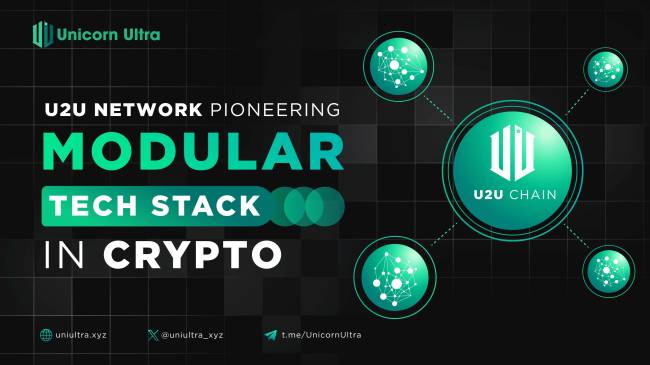
The emergence of the modular tech stack in the realm of cryptocurrency is revolutionizing the way digital assets and blockchain networks are developed and managed. This innovative approach allows for the assembly and customization of various components of a blockchain ecosystem, much like connecting distinct yet compatible pieces of a puzzle. By adopting a modular tech stack, crypto projects can achieve unparalleled flexibility, enabling them to swiftly adapt to market demands, integrate new features, and enhance security measures. Recently appraised by a16z — one of the biggest VC firms in the world, modular technology is expected to become a prominent spotlight in the crypto space in 2024.
This article delves into the transformative impact of modular tech stacks in the cryptocurrency sector, examining their role in fostering scalable, efficient, and robust blockchain solutions. We will explore how it is shaping the future of cryptocurrency technologies and how Unicorn Ultra Network (U2U Network) is at the forefront of its development.
Into the modular tech stack
A modular tech stack, a concept increasingly prominent in the realms of web development, software engineering, and cryptocurrency, offers a transformative approach to building and maintaining technology systems. This approach is characterized by its modularity, where the system is composed of distinct components or modules that can be independently developed, maintained, and updated. This design contrasts sharply with the traditional monolithic architecture, where components are deeply integrated and interdependent.
The modular structure is marked by several key advantages, particularly its flexibility and scalability. In a modular tech stack, adding, removing, or updating modules can be done with minimal impact on the rest of the system, allowing for rapid adaptation to new requirements or technologies. Each module can be specialized for a specific function, leading to improved efficiency and performance.
In the context of cryptocurrency and blockchain, the modular approach is especially relevant. A modular tech stack in this context allows for quick adaptation, incorporating new developments or standards as they arise. This architecture can enhance the security and performance of blockchain systems, with separate modules handling specific functions like transaction processing, smart contract execution, or consensus mechanisms. Furthermore, it facilitates interoperability and easier integration with different blockchain networks and systems.
Monolithic blockchains, like the original versions of Bitcoin and Ethereum, have an all-encompassing architecture where every node in the network is responsible for all functions — processing transactions, maintaining the ledger, and executing smart contracts. This design offers a straightforward, robust framework but encounters scalability issues as every transaction increases the load on every node, leading to congestion and increased transaction fees.
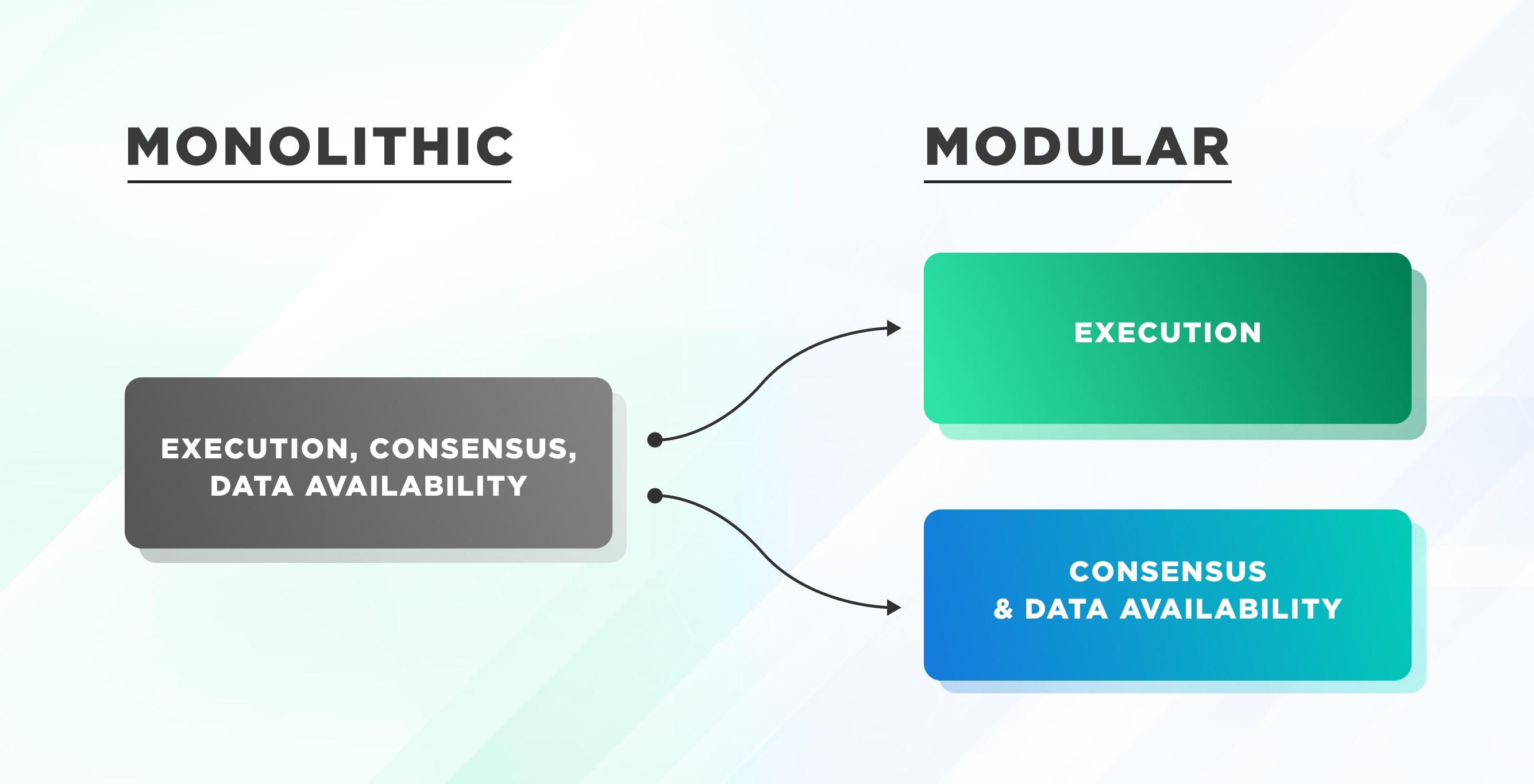
Expert opinions on modular tech stack
a16z, also known as Andreessen Horowitz, is a private venture capital firm based in Silicon Valley, California. Founded in 2009 by Marc Andreessen and Ben Horowitz, the firm has quickly become one of the most influential in the tech industry, with as much as $35 Billion Assets Under Management (AUM). Recently, a16z has released their “Big Ideas in Tech for 2024” report, including various sectors such as Bio & Health, Consumer Tech, Games,… and significantly, Crypto.
Among the 9 big Crypto ideas that a16z is excited about in 2024, we noticed their particular mention of “The rise of the modular tech stack”. Their expertise statement on the modular tech stack is as follows:
“Monolithic architectures have the advantage of allowing deep integration and optimization across what would otherwise be modular boundaries, leading to greater performance… at least at first. But the biggest advantage of an open-source, modular tech stack is that it unlocks permissionless innovation; allows participants to specialize; and incentivizes more competition. We need more of that in this world.”
In a monolithic architecture, the integration and optimization across different functions lead to enhanced performance, particularly in the initial stages of a network’s development. This deep integration can be advantageous for certain types of applications where performance and security are paramount. Nevertheless, this outperformance of monolithic blockchains is only in the short-term, whereas the modular approach would definitely benefit in the long run.
The essence of an open-source, modular tech stack lies in its ability to foster permissionless innovation. This approach allows different participants to specialize in certain aspects of the stack, leading to more robust and diverse development. Moreover, it nurtures a competitive environment where various contributors can introduce innovations independently. This is especially relevant in areas like blockchain technology, where the ability to adapt and innovate rapidly is crucial for the network’s growth and resilience.
With that being said, over time, the blockchain infrastructure has to be developed towards the modular tech stack in order to scale. Especially in the next few years, this technology is evidently one of the most anticipated sectors in crypto.
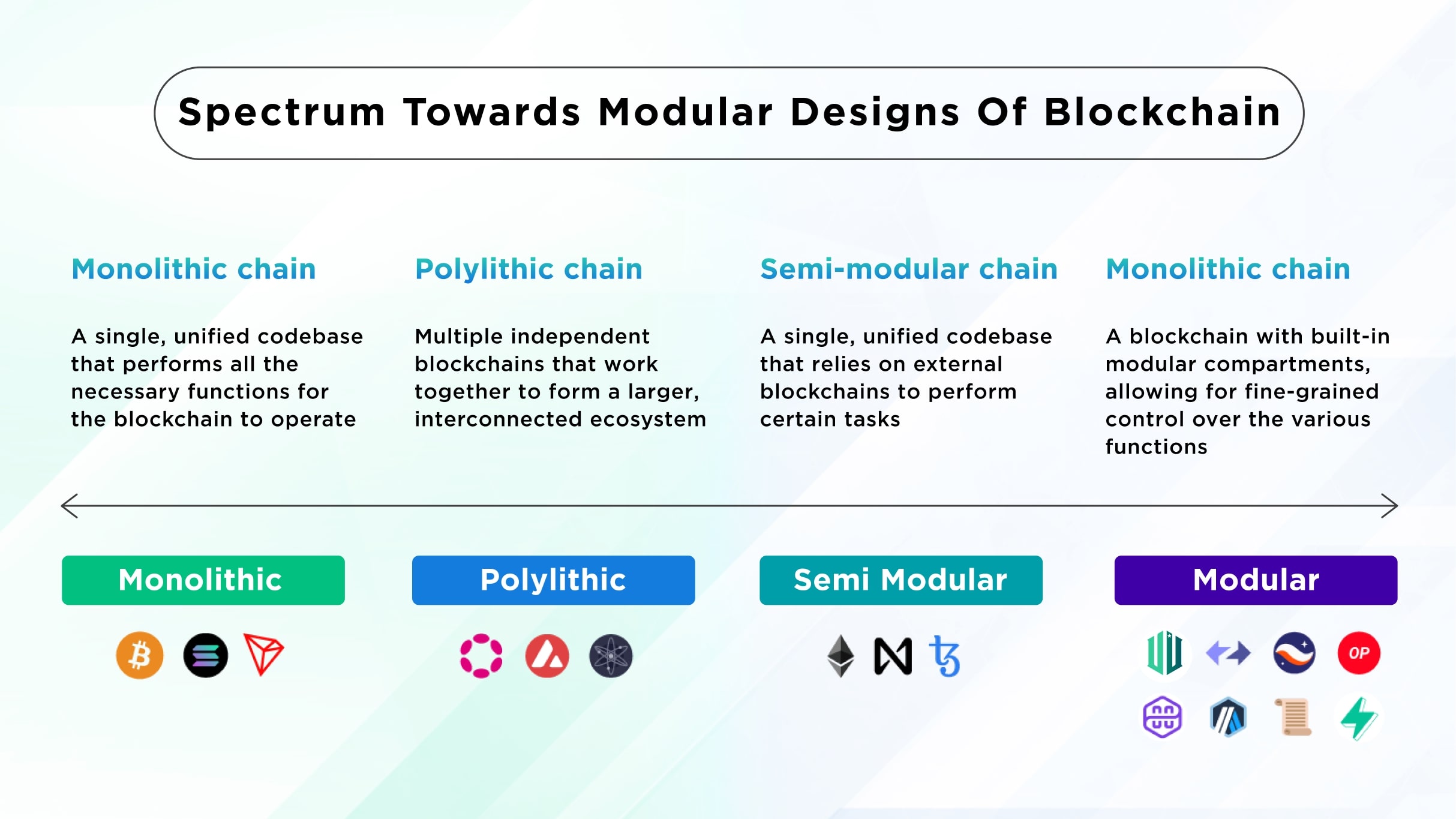
U2U Network brings modular architecture into practice
U2U Network is one of the pioneers in the research and development of the modular tech stack. By applying the modular architecture into U2U Network, our Helios Consensus is able to achieve an astonishing performance of up to 500,000 TPS (Transactions Per Second) with only 650 ms transaction finality time, all while maintaining security and consistency.
U2U Network is made up of 2 core components: Unicorn Ultra Chain (U2U Chain) and Unicorn Ultra Subnet (U2U Subnet).
U2U Chain is a DAG-based, EVM-compatible chain. Its uniqueness includes:
- DAG (Directed Acyclic Graph) based: Using DAG as the core data structure rather than the traditional blockchain technology enables incredibly low latency and faster transaction finality time.
- aBFT (Asynchronous Byzantine Fault Tolerance): As a higher level of Byzantine Fault Tolerance, aBFT is the most secure consensus mechanism known today.
- DPoS (Delegated Proof of Stake): A modified version of Proof of Stake that offers higher efficiency, decentralization, and is more environmentally-friendly.
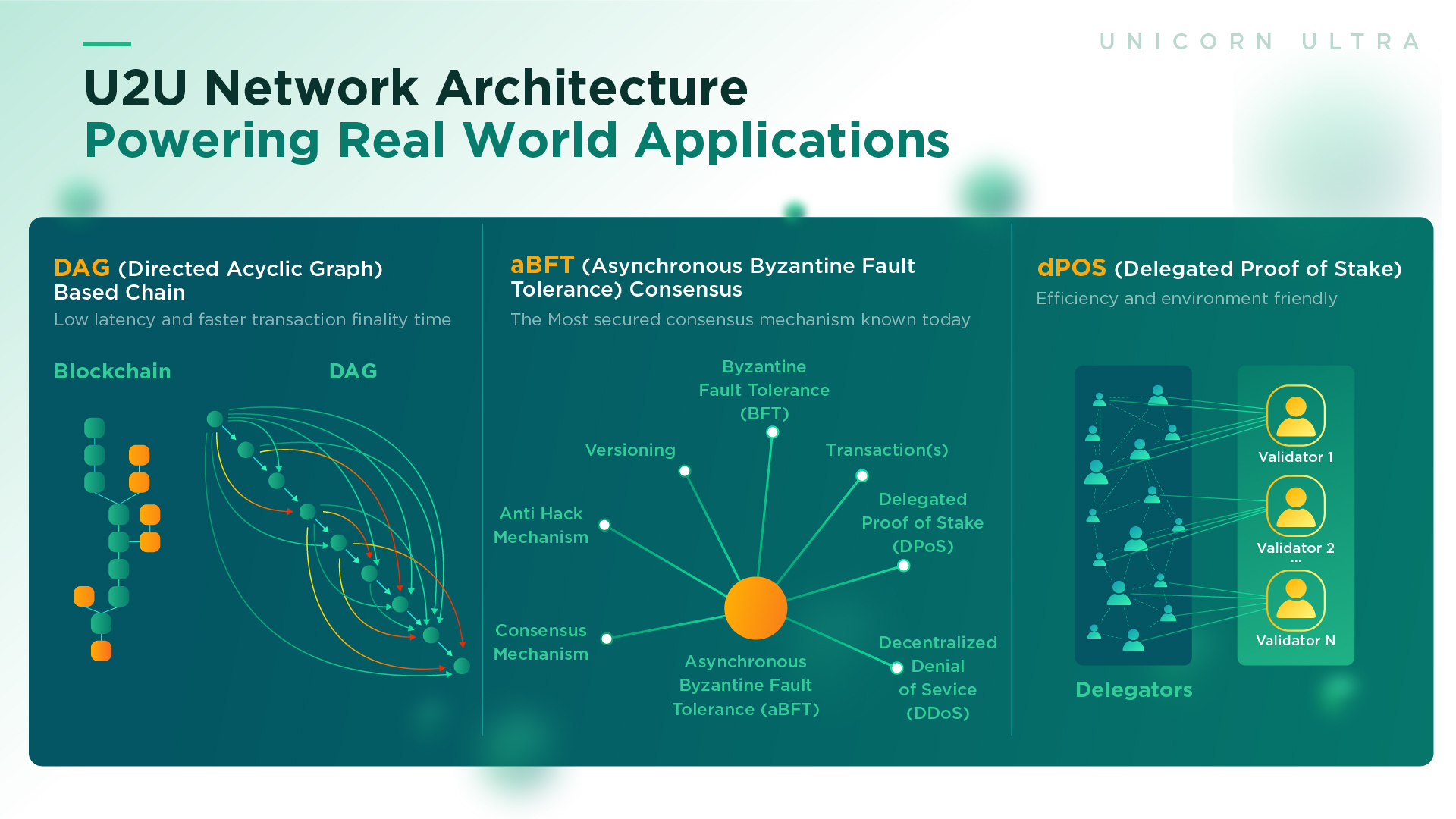
Built atop of U2U Chain, U2U Subnet is a disruptive scaling solution that makes unlimited scalability possible. By implementing an innovative technology called Universal Messages Verification (UMV) and OstracismVM — an original virtual machine, U2U Subnet is able to provide seamless connectivity and interoperability.
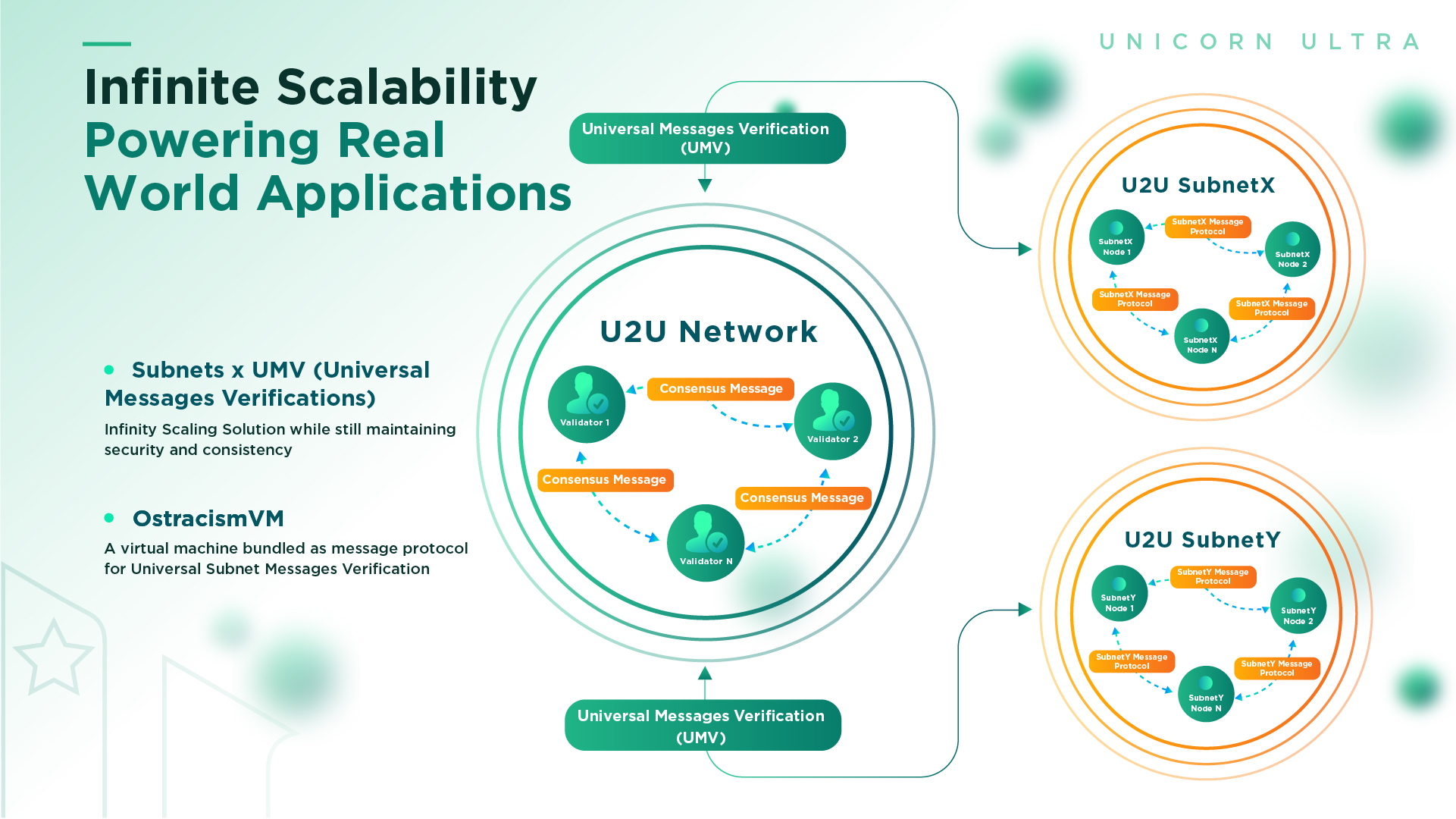
U2U Network’s infinite scalability lies in its modular design of using U2U Chain as the main layer for Settlement, Consensus, and Data Availability while offloading Execution to U2U Subnets. In this way, while U2U Subnets provide outstanding scalability for U2U Network, they still inherit the original security and decentralization of U2U Chain. By applying the modular tech stack, U2U Network is able to truly scale.
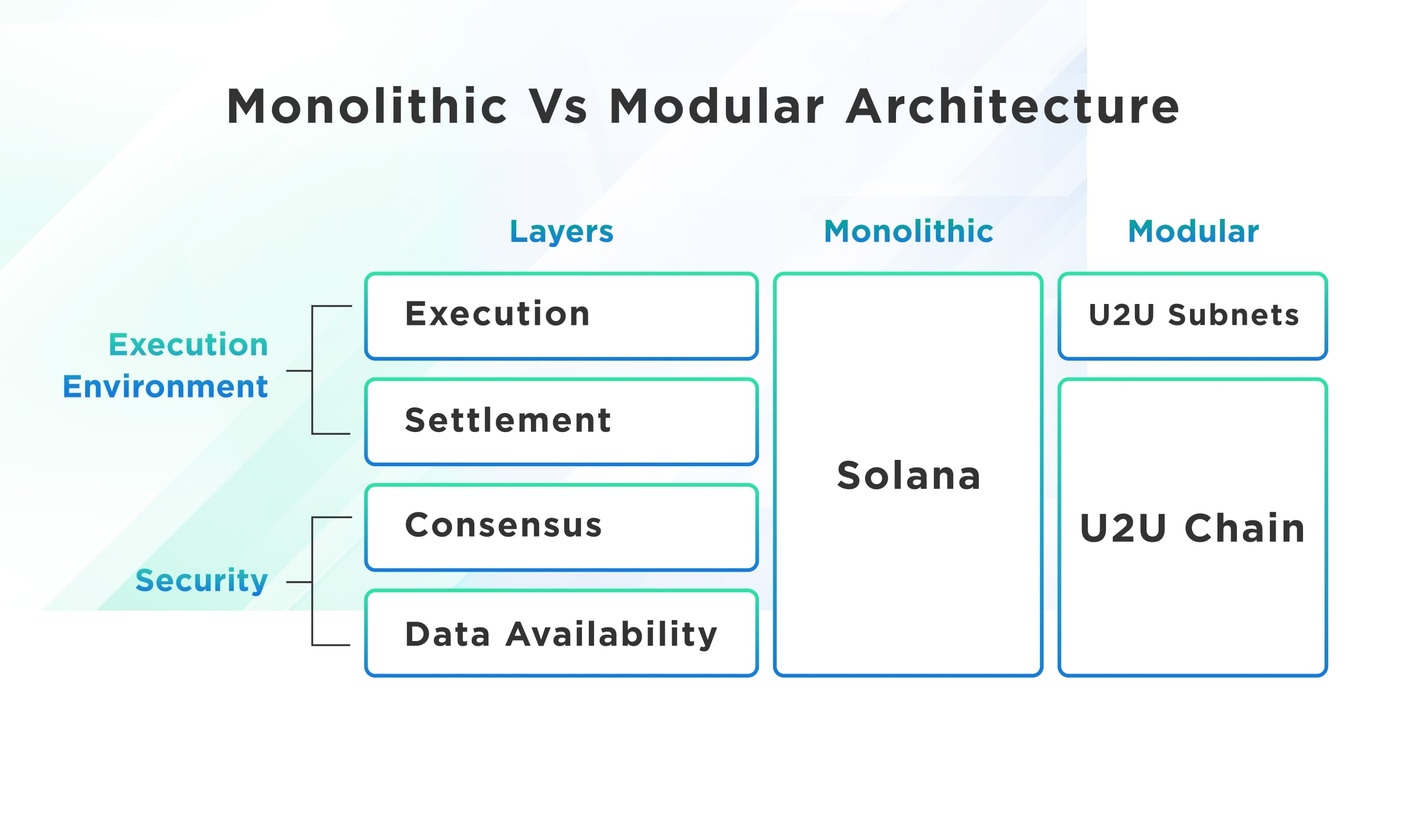
Conclusion
Looking ahead, the trend towards modular tech stacks is poised to drive innovation. Developers can focus on creating specialized modules, unbound by the limitations of monolithic structures. This approach is expected to gain wider adoption across various technology sectors, not limited to only crypto and blockchain.
As we at U2U Network navigate the evolving landscape of technology, we find ourselves at the forefront of a significant shift towards the modular tech stack. This approach, which is revolutionizing software design and development, aligns perfectly with our vision and expertise. We are actively involved in creating specialized modules, free from the constraints of traditional monolithic structures.
U2U Network recognizes that as blockchain technology progresses, the role of modular architectures becomes increasingly crucial. We are not just participants in this evolution; we are driving forces, shaping the future of technology with our innovative approaches and solutions. As the tech world continues to embrace modular architectures, our role in defining and leading this change grows ever more significant.
.png)